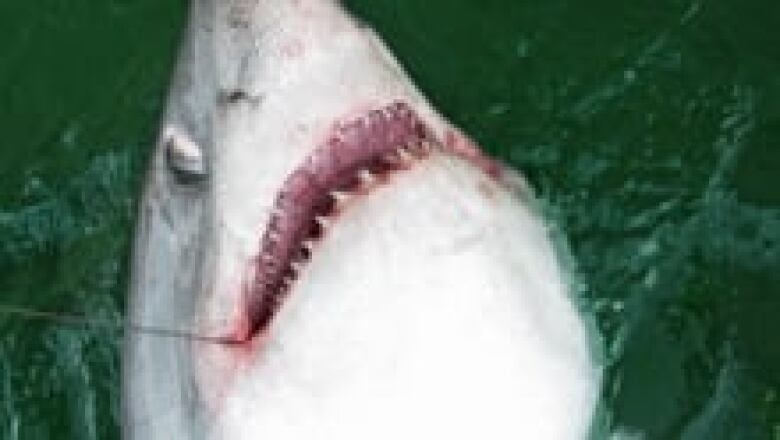Shark fishing and research come together in St. Andrews
St. Andrews Sport Fishing Company serves tourists and scientists on Bay of Fundy
A St. Andrews company is marrying shark fishing with scientific research.
The St. Andrews Sport Fishing Company is taking tourists out into the Bay of Fundy to fish porbeagle sharks that can weigh close to 225 kilograms.
The goal is to reel the apex predators close enough to the boat. But instead of harvesting the giant fish, theyre bringing them within arms reach for researchers to tag.
"We started catching a few and we decided that we should be concerned about the conservation of them," said Capt. Chris Levitt, of the Sea Fox fishing vessel.
"That's when we got into contact with Dr. Steve Turnbull."

Turnbull, a biologist from the University of New Brunswick in Saint John, said that the pairing with Levitt was organic and important.
"This shark, in particular, is endangered," Turnbull said. "They're a vital component to the ecosystem in general. They're all part of the whole big food chain, so if you remove one big critical component, you don't know what you're going to see for impact until it's too late. They're apex predators out here in the bay."
Tourists do much of the manual labour, usually struggling for close to two hours with the sharks. Porbeagles are strong enough to pull the Sea Fox fishing vessel against ocean currents.
Once researchers tag them, they are cut free and released back into the bay. The shark never leaves the water.
"We've now got more sophisticated tags," said Turnbull. "We are going to be able to measure position, depth, temperature of the water, swimming speed. And those are going to be on for a year."
'It's pretty spectacular'

Levitts daughter Nicole is the conduit thats brought the two fields of sport fishing and research together.
While studying for her masters degree in biology at the University of New Brunswick in Fredericton she paired her familys fishing and whale watching business together with the research.
"For us to be able to learn more about the sharks in the Bay of Fundy I think is vitally important," said Levitt. "Really, we know very, very little, if not almost nothing about them."
She said the pairing of sport and scientific research is a unique experience and is proud that her family can offer something special and local to people.
"It's a two-hour fight with a huge shark. Anywhere from between six to eight-and-a-half feet long, 300-pound shark. It's pretty spectacular. And then on top of that, you get to tag it for research," she said.
"You get the fun, exhilarating part and then you get to help out with the science aspect as well."
Surprising discoveries
So far, 69 sharks have been tagged in the past four years, according to Turnbull. And the information has proven surprising.
"We know now that sharks that come into the bay range as far south as Long Island," Turnbull said. "They do range down as far as the Georges Bank area and as far as Newfoundland."
"Theres the North Atlantic population here on the west side," said Turnbull. "Then there's another population on the east side, towards Europe. They don't seem to mix."
Porbeagle sharks are often mistaken for great whites. Their body profile, while similar, is smaller than the iconic great white shark.
They can swim in bursts ofup to 40 miles an hour and feed mostly on fish such as mackerel.
Because of their size and role as a top predator, it can take porbeagle sharks as many as four years to become sexually mature.
That time can increase for female sharks due to the animal needing more energy to reproduce successfully than their male counterparts. That longer generational life-cycle makes the shark population susceptible to dangers like overfishing.
"We dont know enough about them," said Turnbull. "Thats why this project is important; to learn everything we can, while we can."













_(720p).jpg)


 OFFICIAL HD MUSIC VIDEO.jpg)
.jpg)



























































































